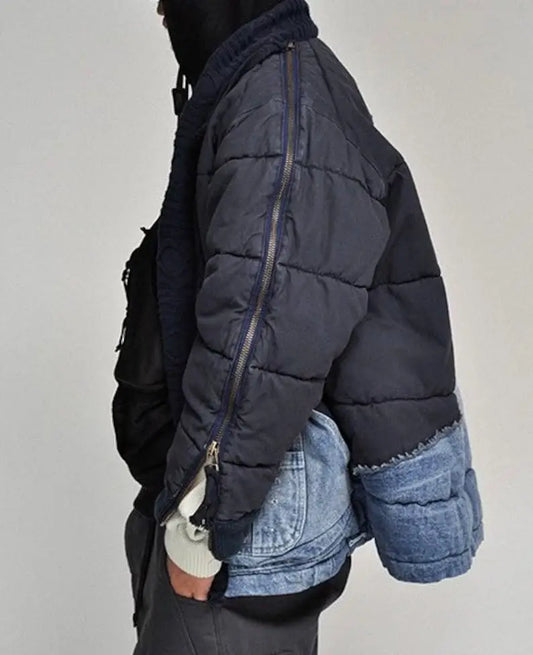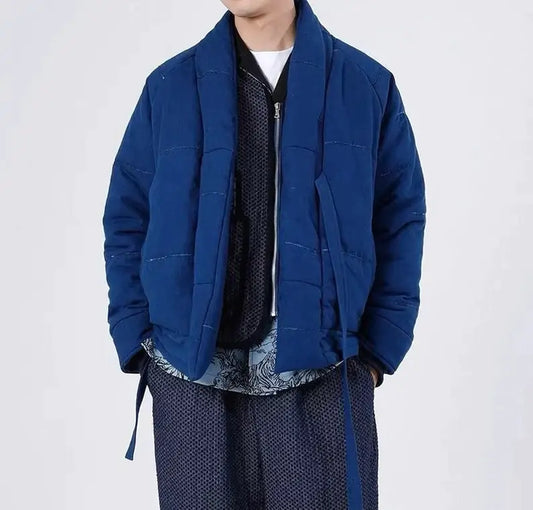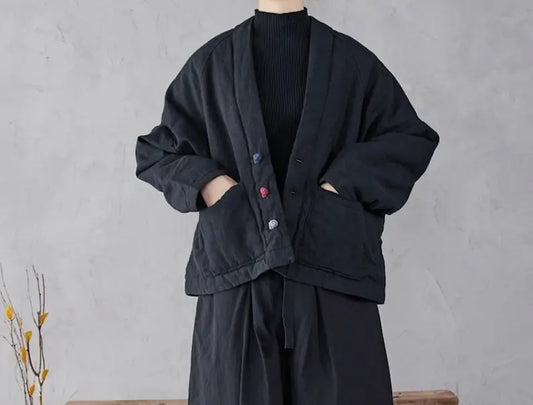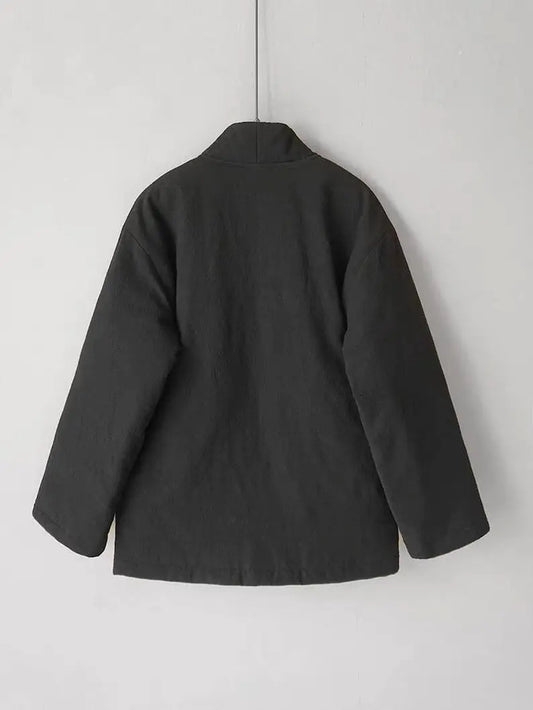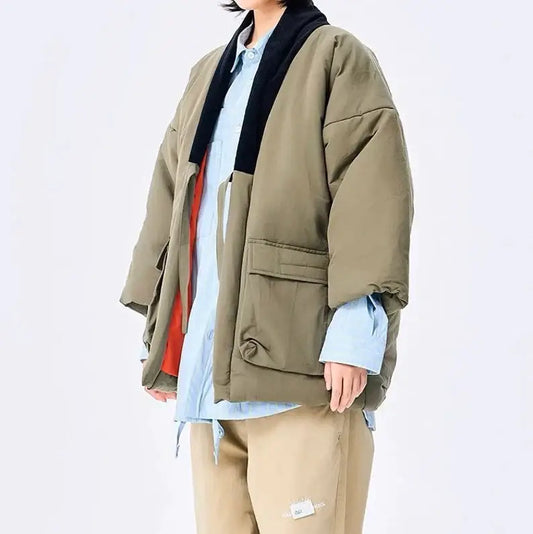Discover Warmth and Style with a Hanten
A hanten is a traditional Japanese winter garment typically worn during the winter months. This is a short coat that is worn daily and has a warm padding or lining of cotton through the body.
Hanten Origins
The hanten (袢纏, 半纏, 半天 or 袢天) is a short winter coat worn by men and women belonging to the traditional Japanese clothing ensemble. Its origins can be traced to the eighteenth century, during the Edo period. Unlike other clothing of the time, the hanten is not reserved for the aristocracy.
The shape of the hanten resembles that of a noragi, or haori. The facing and lining are covered with a thick layer of wadded cotton. The collar is usually made of black satin. Hanten are often decorated with a heraldic insignia, or kamon (家紋), as well as other designs.
As there exist numerous traditional garments in Japan which developed throughout the years, one that remains in use to this day is the Japanese hanten.
Otherwise known as noragi hanten, it is essentially a short coat used during the winters.
The form of the Japanese hanten resembles that of the haori. Whereas some traditional clothing was restricted to only one gender, the Japanese hanten may be worn by equally well by men and women.
It came to be worn by common people during the Edo period, especially around the 18th century. It was widely used until after World War II mainly as work clothes for urban manual laborers such as craftsmen and store clerks, and the word "hantenkimo" (one who wears hanten) was also used to indicate the working class.
There are different types of hanten, such as broad-sleeved lintel, square-sleeved lintel, and tubular-sleeved lintel, depending on the shape of the sleeves, and in terms of design, there is also the in-lintel, which is dyed with a set crest or a store name.
In-hanten were often provided to hired workers or given to journeymen and other workers as a celebration, and were accepted as formal wear by the artisan class, and were also commonly referred to as kyoku-haori.
Difference between a Hanten and a Happi coat
The difference between happi coats and lintels is less clear from the history of clothing. In the Edo period, happi coats did not develop as a civilian item, but were born and handed down in the samurai community, and they continued to be passed down in the lives of government officials and others into the Meiji period.Lintels, on the contrary, were worn in daily life mainly by common people, townspeople, and artisans. Because of the prohibition of haori for the general public during the Edo period, the happi coat changed its form in place of the haori with the collar turned back (the happi coat of the time was also worn with the collar turned back), and it seems that confusion with the lintel began at that end of the line.
The collar and sleeves differ between haori and happi coat. The difference between haori and happi is clear: the collar is folded back in haori and not in happi, and the sleeves of haori are embroidered sleeves, while those of happi are tubular sleeves.




